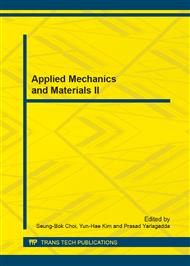p.723
p.727
p.732
p.736
p.740
p.744
p.749
p.754
p.759
Flexural Behavior of CFRP Strengthened Reinforced Concrete Beams
Abstract:
In order to clear the influence of carbon fiber reinforced polymer (CFRP) on the bearing capacity of reinforced concrete beams, tests of three reinforced concrete beams strengthened with CFRP are carried out. Experimental result shows that CFRP can effectively increase bearing capacity of flexural member, and can restrain the development of crack. Cracking load, yield load and ultimate load are significantly increased. At the same time numerical simulation is done; it is good agreement with experimental results.
Info:
Periodical:
Pages:
740-743
Citation:
Online since:
December 2013
Authors:
Keywords:
Price:
Сopyright:
© 2014 Trans Tech Publications Ltd. All Rights Reserved
Share:
Citation:


